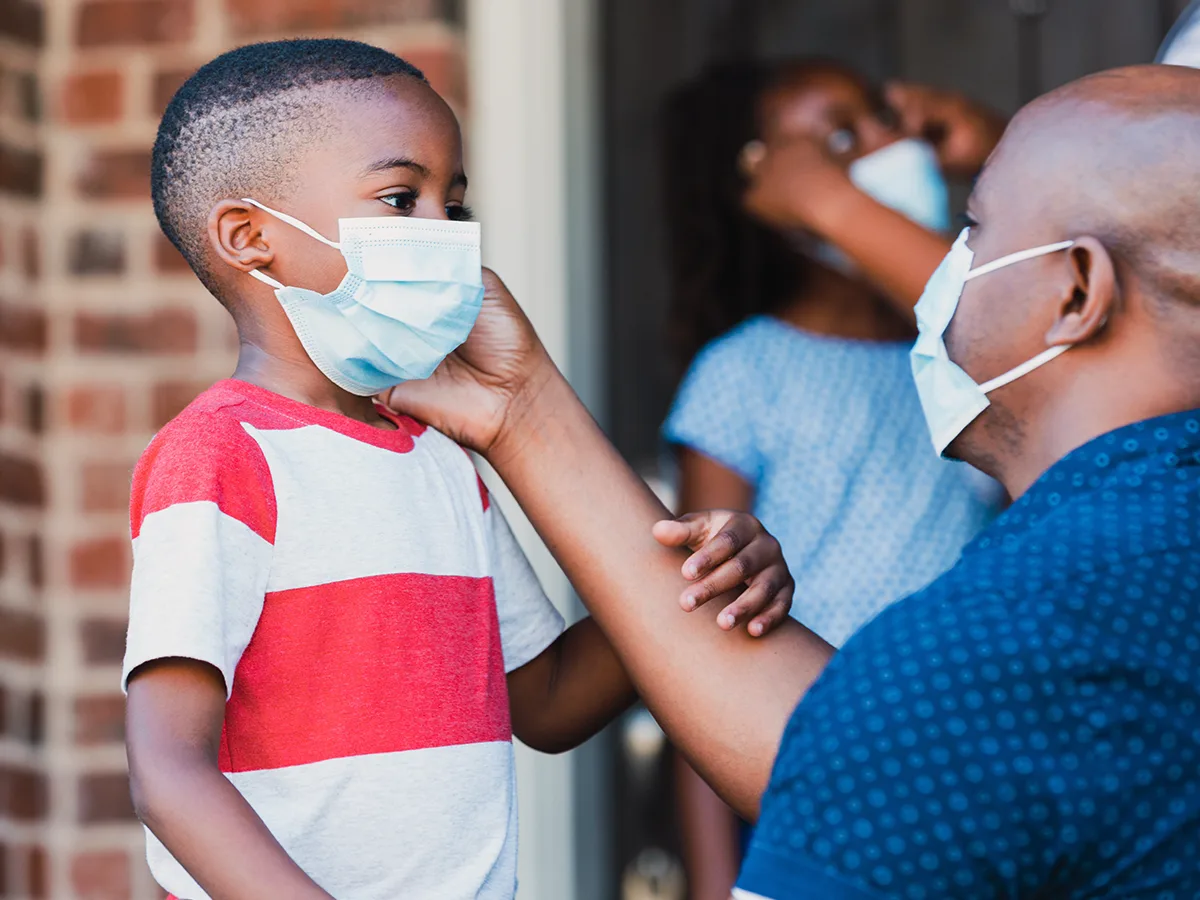Trouble wearing masks: Tips to help kids at school

Wearing face masks is tough for some kids, even in short bursts. If kids need to wear masks at school, they may have to wear them for long stretches. This can be a real struggle, especially for some kids who learn and think differently.
Here are reasons why it’s hard for some kids to wear a mask, and tips for helping.
Impulsivity and wearing masks
Impulsive kids often act without thinking. They may pull off their mask to talk to friends or teachers without realizing they’re doing it. They don’t mean to be defiant. But they struggle with self-control, which makes it hard to stop and think about the rules or risks.
Quick tip for families
Clip a breakaway lanyard to one of the elastic ear straps of the mask. That way when it’s pulled off, it’s hanging around your child’s neck as a reminder to put it back on. (It also won’t drop on the ground.)
Quick tip for teachers
Stay calm and reiterate the expectations around mask-wearing. Reacting in fear can escalate the situation from a simple reminder to a bigger behavior challenge.
Sensory challenges and wearing masks
Wearing a mask can be very upsetting for kids with sensory processing challenges. They may not be able to tolerate the feel, smell, or closeness of a mask. That extreme discomfort can cause them to take off or fiddle with their masks. Or it could lead to meltdowns.
Quick tip for families
Invite your child to try on a few different kinds of masks. Ask your child how the masks feel. Is there one mask that’s more comfortable than the others? If so, consider having a few extra of those masks on hand.
Quick tip for teachers
Check in with parents about how kids have been tolerating wearing masks in other places. If you know a child has a hard time with masks, allow for regular outdoor mask breaks.
Trouble with focus and wearing masks
Kids who struggle with focus and memory can have a hard time following rules. They may miss directions the teacher gives about mask-wearing or quickly forget them.
Quick tip for families
First, make sure your child knows why masks are important. Look at the school’s guidelines, and then create a list of rules for where and when to wear a mask at school. You can do this in writing or using pictures. Go over the rules every morning before school.
Quick tip for teachers
Be open with kids about the fact that we all forget things sometimes. As a class, talk through how you can respectfully remind others to put their masks on. You can also use when-then sentences to model what needs to happen. (“When you put on your mask, then you can meet us in the art room.”)
Trouble with motor skills and wearing masks
Poor motor skills can make it physically hard for kids to get masks on and off and adjust them to fit well. Kids may struggle in a few ways. They might have trouble making the right movements. Or they might find it hard to grasp and maneuver the elastic ear bands. Some kids may have trouble following the steps involved.
Quick tip for families
Give your child lots of practice getting masks on and off. Your child can also “help” a favorite stuffed animal or doll put one on.
Quick tip for teachers
Talk to parents and caregivers about practicing at home. Tell families where kids are getting tripped up in the process, so they know what to practice. And share the different types of face coverings your school district allows.
Next steps
Families and educators: Stay in contact about student challenges this year with our back-to-school update form.
Back-to-school update: Tell teachers how your child is doingPDF - 79.9 KB


